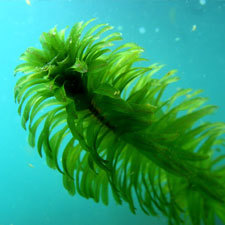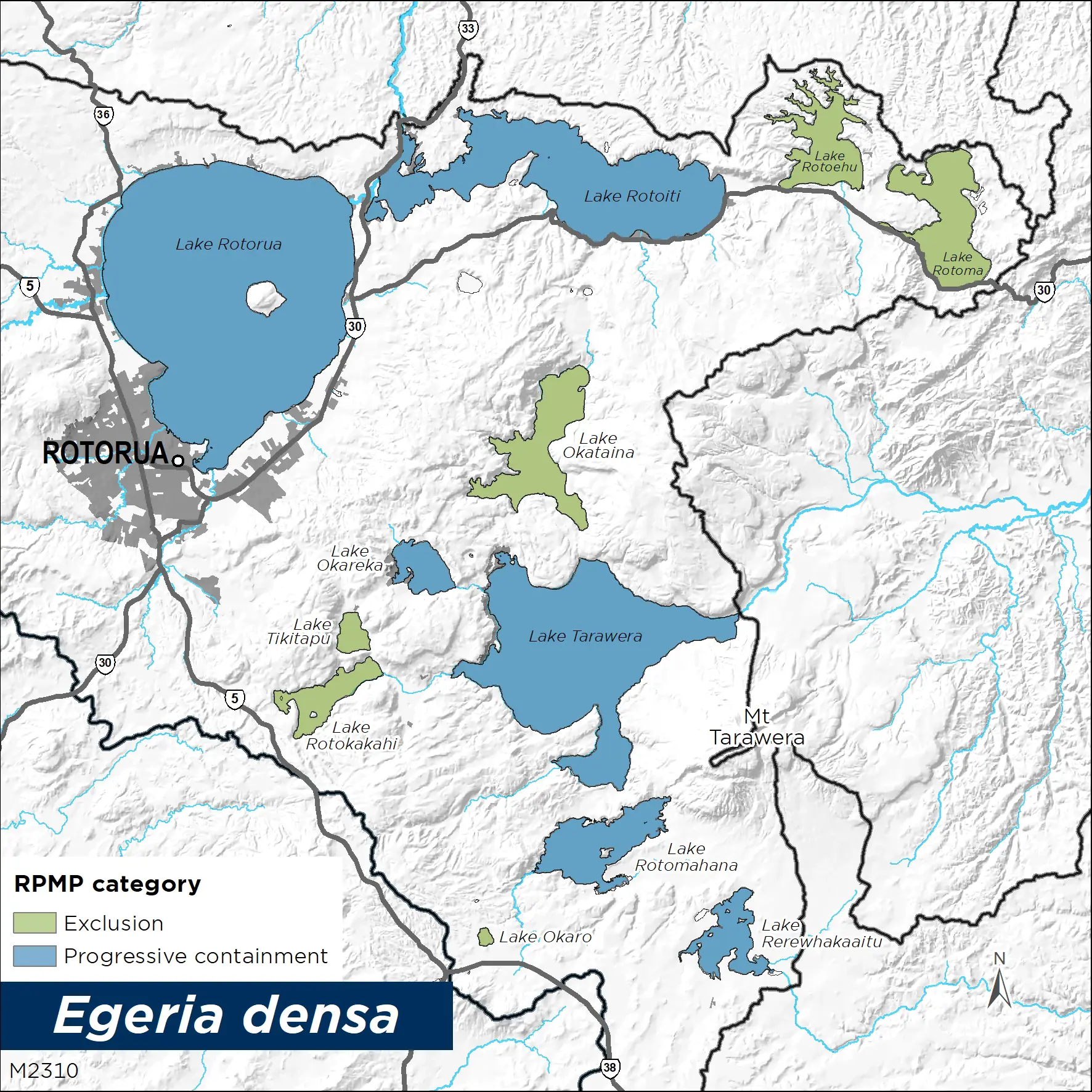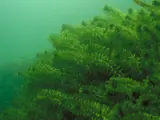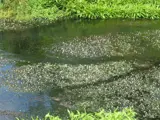 Egeria
Egeria
Common name: Egeria
Botanical name: Egeria densa
Management programme: Exclusion, Progressive Containment
Introduced as an ornamental aquarium plant and naturalised by 1946. It doesn’t produce seed in New Zealand as only male plants are established here, instead it spreads through fragments breaking off and settling in new sites.
Why is it a pest?
- Egeria forms vast underwater ‘meadows’ that shade out smaller native species.
- Rotting Egeria stagnates waterbodies, killing fauna and flora.
- Egeria grows from stem fragments. These fragments can be moved through water flow and also hitch rides between waterways on boats, trailers, nets, diggers and fishing gear.
Where is it found?
Egeria densa is present in lake’s Rotomahana, Rerewhakaaitu, Ōkāreka, Tarawera, Rotorua and Rotoiti. It first popped up in Lake Rotorua in the early 1980s and spread from there. Risk areas include the still waters of swamps, ponds, and lakes.
What does it look like?
- Egeria is a submerged, bottom-rooted, vigorous aquatic perennial.
- It is one of the oxygen weeds, denser and broader than Elodea.
- Egeria has distinctive white flowers with three white petals floating on the water surface in summer.
What are the rules?
Exclusion
Exclusion pests are not known to be present or established in the Bay of Plenty region. The Bay of Plenty Regional Council is responsible for managing new incursions into the region. Action may be required from landowners or occupiers to support a control operation.
Progressive Containment
Progressive Containment species are pests which the Council aims to prevent from spreading, reduce the distribution, or eradicate within parts of the region over time. Landowners or occupiers are responsible for the control of Progressive Containment species on their property. Council may enforce the control of these pest species.
How do you get rid of it?
Council is trying to prevent Egeria from getting into our waterways which have not been infested yet. If you are travelling with equipment or machinery between waterways please ensure that you check, clean, and dry.
Images




